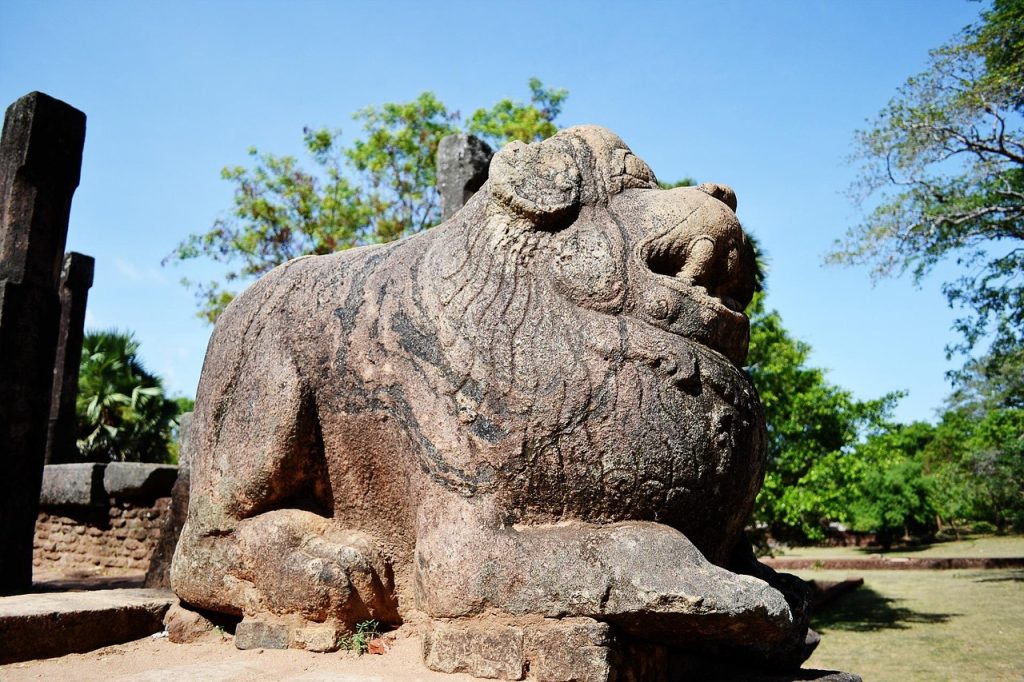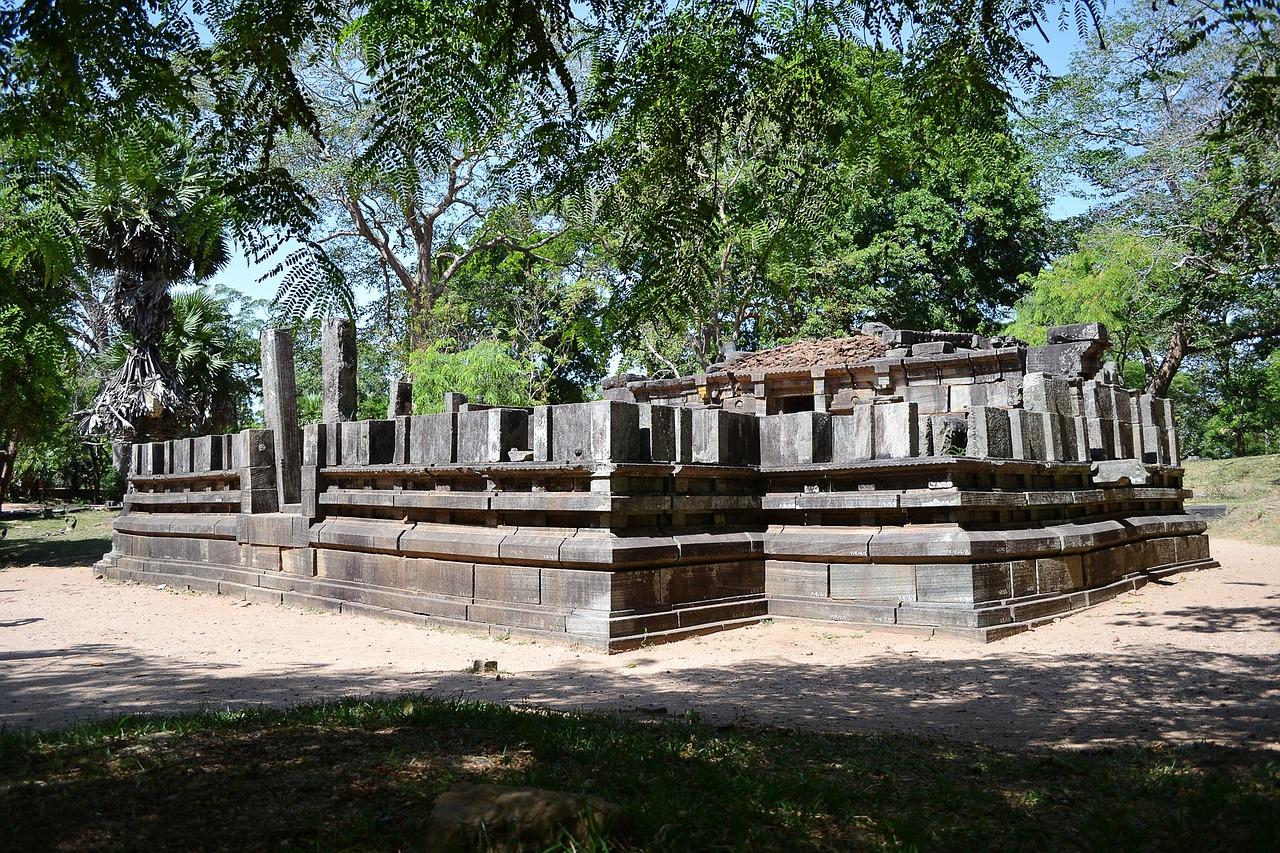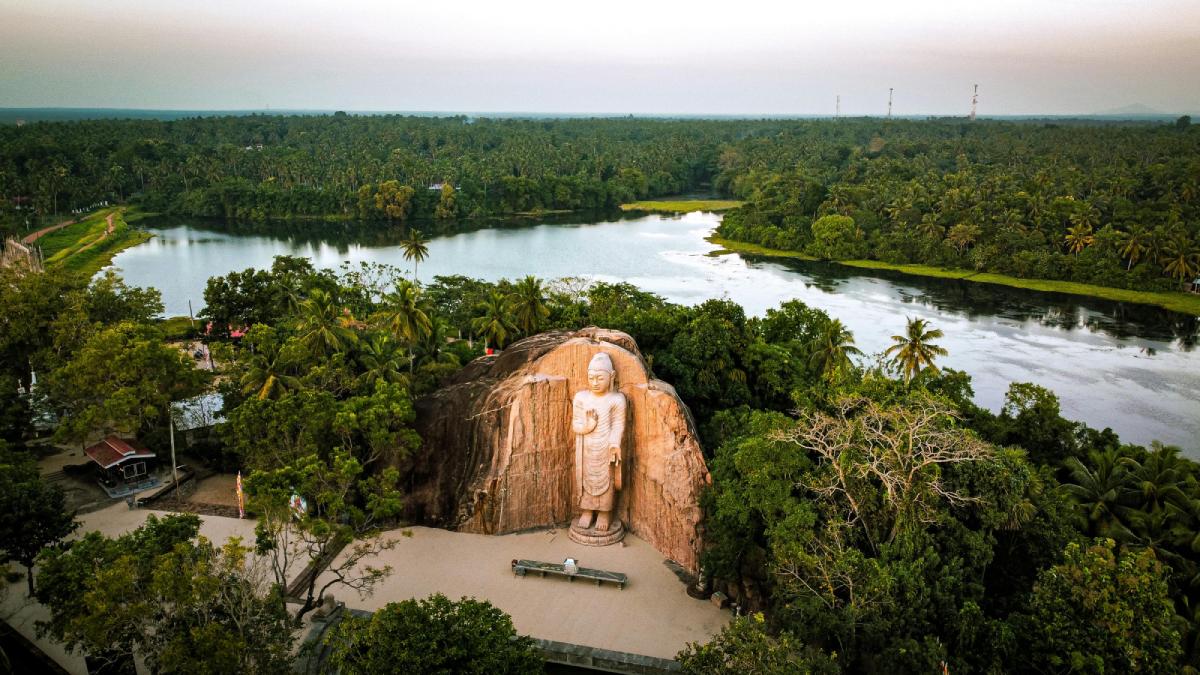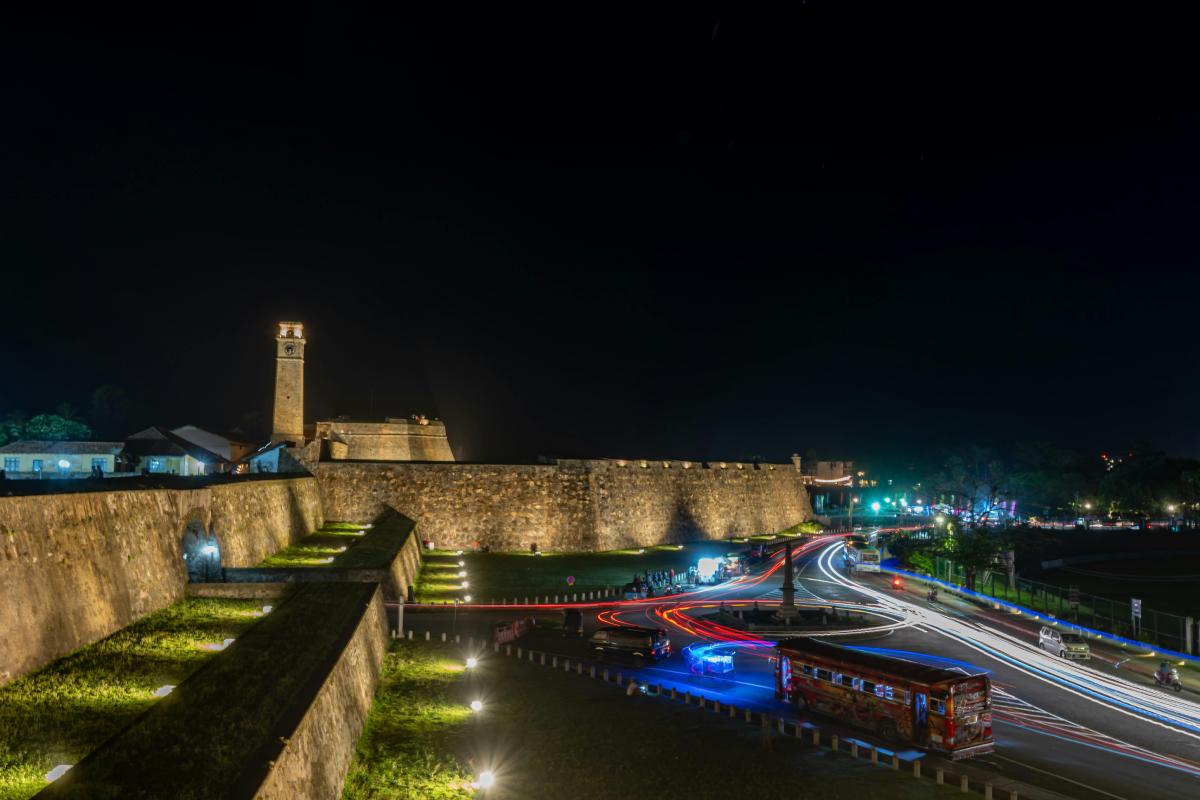Polonnaruwa stands as a testament to Sri Lanka‘s glorious medieval past, a UNESCO World Heritage site that once served as the country’s second capital after the fall of Anuradhapura. This ancient city flourished between the 11th and 13th centuries CE and represents one of Sri Lanka’s most well-preserved archaeological treasures. From its magnificent stone sculptures to its innovative irrigation systems, Polonnaruwa offers fascinating insights into the island’s cultural, religious, and technological achievements during its golden age.
Historical Background: Rise of a New Capital

The history of Polonnaruwa as a capital begins with tragedy. For nearly 1,500 years, Anuradhapura had served as the heart of Sinhalese civilization on the island. However, repeated invasions from South Indian kingdoms—particularly the Cholas from Tamil Nadu—eventually overwhelmed the ancient capital. In 993 CE, the Chola dynasty captured Anuradhapura, forcing the Sinhalese leadership to retreat.
The Chola conquerors opted to establish their administrative center at Polonnaruwa, likely due to its strategic position and more defensible location. What began as a foreign occupation would transform into one of Sri Lanka’s most prosperous eras after King Vijayabahu I succeeded in expelling the Chola forces in 1070 CE and decided to maintain Polonnaruwa as the kingdom’s capital rather than returning to Anuradhapura.
Polonnaruwa would reach its zenith under the rule of King Parakramabahu I (reign 1153-1186 CE), often referred to as Parakramabahu the Great. Under his ambitious leadership, the city transformed into a marvel of urban planning, architecture, and artistic achievement. His famous decree—”Not even a little water that comes from the rain must flow into the ocean without being made useful to man”—exemplifies the engineering mindset that characterized his reign and led to Polonnaruwa’s extensive irrigation networks.
The city remained the capital of Sri Lanka until the late 13th century when declining royal power, ecological challenges, and invasions from South India pushed the kingdom’s center southward. By 1284 CE, Polonnaruwa had been largely abandoned as a capital, though it continued to hold religious significance.
Urban Layout and Architecture
The archaeological zone of Polonnaruwa extends over an area of approximately 4 square kilometers (1.5 square miles), revealing a carefully planned urban layout divided into distinct zones:
The Citadel (Royal Palace Complex)
At the heart of Polonnaruwa stood the Royal Palace complex, a seven-story structure commissioned by King Parakramabahu I. Though only the lower floors remain today, the massive 3-meter-thick walls suggest a formidable structure that once dominated the city skyline. Adjacent to the palace lies the Royal Audience Hall, distinguished by its ornate lion portal and beautifully carved stone elephants along its walls.
The Sacred Quadrangle
Perhaps the most concentrated collection of religious monuments in Polonnaruwa is found within the Sacred Quadrangle (Dalada Maluva). This compact, elevated platform contains an extraordinary collection of buildings:
Polonnaruwa Ancient City of Sri Lanka
- Vatadage: A circular relic house with four entrances, each guarded by stone carvings of doorkeepers, featuring exquisite stone steps and moonstones.
- Hatadage: Built to house the sacred Tooth Relic of the Buddha.
- Atadage: An earlier tooth relic temple constructed by King Vijayabahu I.
- Gal Pota (Stone Book): A massive 9-meter granite slab covered with inscriptions celebrating King Nissanka Malla’s achievements.
- Satmahal Prasada: A unique pyramid-like seven-story structure showing possible influences from Southeast Asian architectural styles.
- Latha Mandapaya: A distinctive structure with stone pillars carved to resemble lotus stalks.
Northern Monuments
Beyond the core city area lie several of Polonnaruwa’s most impressive monuments:
- Rankot Vihara: The largest stupa in Polonnaruwa at 54 meters high, following the architectural traditions established at Anuradhapura.
- Lankatilaka Temple: A massive brick structure with 17-meter walls that once housed a colossal standing Buddha image.
- Gal Vihara (Stone Temple): Perhaps the most famous site in Polonnaruwa, featuring four magnificent Buddha images carved from a single granite outcrop—a seated figure in meditation, a larger seated figure inside an artificial cave, a standing figure nearly 7 meters tall, and a 14-meter-long reclining Buddha depicting the moment of entering parinirvana (final death).
Engineering Marvels: The Irrigation Systems
While the religious and royal monuments of Polonnaruwa impress visitors today, the city’s most remarkable achievement might have been its sophisticated irrigation infrastructure. The kings of Polonnaruwa constructed an elaborate network of tanks (reservoirs), canals, and dams that transformed the dry zone of north-central Sri Lanka into productive agricultural land.
The cornerstone of this system was the Sea of Parakrama (Parakrama Samudra), an enormous artificial reservoir covering nearly 2,500 hectares. Created by damming the Mahaweli River, this engineering marvel required a 14-kilometer-long, 12-meter-high embankment and provided water security for the entire kingdom. The system included:
- Storage tanks (wewa) of various sizes
- Diversion dams (amuna) to channel water from rivers
- Canals (ela) with precisely calculated gradients to ensure proper water flow
- Sluice gates with stone-cut precision that still function today
- Spillways to manage overflow during monsoon seasons
This hydraulic civilization demonstrates the remarkable engineering knowledge possessed by the kingdom’s planners. Modern irrigation engineers remain impressed by the precision and durability of these ancient water management systems, many of which were restored and continue functioning today.
Cultural and Religious Significance
Polonnaruwa represents a fascinating period in Sri Lankan history when multiple religious and cultural influences converged:
Religious Pluralism
While predominantly Buddhist, Polonnaruwa shows evidence of religious diversity. Hindu temples (devales) dedicated to deities such as Shiva were constructed alongside Buddhist monuments, reflecting both the influence of South Indian culture and the inclusive religious policies of certain kings. The Shiva Devale No. 2 is considered the oldest structure in Polonnaruwa, dating to the Chola occupation period.
Architectural Evolution
The monuments of Polonnaruwa demonstrate an evolution in Buddhist architecture. Earlier structures maintain connections to the Anuradhapura period, while later monuments show innovation and, in some cases, influence from Mahayana Buddhist traditions and Southeast Asian styles. The shift from wooden superstructures to more brick and stone construction also marks an architectural transition.
Artistic Achievements
The sculptural work at sites like Gal Vihara represents the zenith of ancient Sri Lankan stone carving. The serene expressions and flowing robes of the Buddha images display remarkable technical mastery and deeply felt spiritual devotion. The reclining Buddha, in particular, achieves an extraordinary sense of peaceful transcendence.
Decline of Polonnaruwa
By the late 13th century, several factors contributed to Polonnaruwa’s abandonment as a capital:
- Increasing invasions from South Indian kingdoms made maintaining the capital in this location strategically difficult
- Declining central authority of later kings reduced the ability to maintain the extensive irrigation networks
- Environmental challenges including malaria outbreaks in the region
- Economic shifts as trade routes evolved and maritime commerce gained importance
By 1284 CE, the capital had shifted to Dambadeniya, and subsequently moved through several locations before establishing itself in the central highlands at Kandy, where it would remain until British colonization in the 19th century.
Rediscovery and Conservation
After centuries of abandonment, Polonnaruwa was gradually reclaimed by the jungle. While local knowledge of the site never completely disappeared, the systematic archaeological exploration of Polonnaruwa began during the British colonial period in the 19th century.
Significant restoration work was undertaken in the 20th century after Sri Lanka (then Ceylon) gained independence. In 1982, UNESCO recognized Polonnaruwa’s outstanding universal value by inscribing it as a World Heritage Site.
Today, conservation efforts continue to balance preservation needs with the site’s role as both a major tourist destination and an active pilgrimage site for Buddhists. Challenges include:
- Managing tourism impacts on fragile structures
- Protecting stone carvings from environmental degradation
- Maintaining authentic restoration approaches
- Balancing archaeological preservation with continuing religious use
Experiencing Polonnaruwa Today
Modern visitors to Polonnaruwa can explore the extensive archaeological park, which is typically divided into five main groups of monuments for easier navigation. The Archaeological Museum near the entrance provides essential context through its collection of artifacts, scale models, and historical information.
Beyond the monumental ruins, the natural setting adds to the site’s appeal. The reservoirs attract diverse wildlife, particularly birds, and visitors might encounter troops of toque macaque monkeys—made famous in the 1978 documentary “Monkey Kingdom”—that inhabit the ancient ruins.
The nearby Minneriya and Kaudulla National Parks complement the cultural experience with opportunities to witness large gatherings of Asian elephants during the dry season, a phenomenon known as “The Gathering.”
Polonnaruwa’s Legacy
The legacy of Polonnaruwa extends far beyond its physical remains. It represents:
- A high point of hydraulic civilization and sustainable water management
- The adaptability of Sinhalese culture following the fall of Anuradhapura
- Religious syncretism and cultural exchange between Buddhist and Hindu traditions
- Artistic and architectural innovation that influenced later Sri Lankan kingdoms
- A powerful symbol of Sri Lankan national identity and heritage pride
For contemporary Sri Lanka, Polonnaruwa serves as both a major tourist attraction supporting the economy and a source of national pride connecting modern citizens to their ancient heritage. The engineering principles demonstrated in its irrigation works continue to inspire sustainable water management approaches in the region.
Conclusion
Polonnaruwa encapsulates a remarkable chapter in Sri Lanka’s rich cultural history—a period when artistic excellence, engineering innovation, and political power converged to create a civilization of extraordinary achievement. From the serene Buddha statues of Gal Vihara to the vast waters of Parakrama Samudra, the site offers tangible connections to a sophisticated medieval kingdom that flourished despite political challenges.
As visitors walk among these ancient stones today, they experience not just archaeological curiosities but the living legacy of a civilization whose achievements in art, architecture, and environmental management continue to resonate across the centuries. In its planned urban spaces, technological innovations, and artistic masterpieces, Polonnaruwa reminds us of humanity’s capacity for creating works of both practical genius and spiritual beauty—a legacy worth preserving for future generations.


